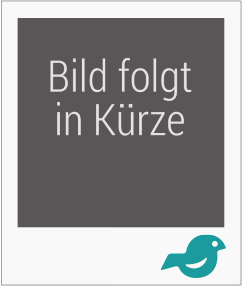Main description:
This state-of-the-art volume presents an outstanding collection of 22 studies on current issues facing research in second-language acquisition (SLA). The editors sought contributions for this volume from seasoned veterans of SLA like Lydia White and Susan Gass, from well-known researchers in linguistics and/or first-language acquisition like Haj Ross and Harald Clahsen, and from relative newcomers to the field like India Plough and Jean-Marc Dewaele. The topics covered range from the role of universals at various levels of second-language (L2) knowledge; the way that linguistic knowledge is represented by L2 learners; the changing nature of linguistic theory itself; and the definition of usage phenomena like style shifting and code switching. The introduction to The Current State of Interlanguage gives a concise yet detailed overview of research in the field over the past 10 years, and focuses on the present growing concensus on a number of issues that were at one point highly controversial.
Table of contents:
- The current state of interlanguage
- Prominence in applied linguistics
- I-interlanguage and typology
- Universals, SLA, and language pedagogy
- Learnability, pre-emption, domain-specificity, and the instructional value of 'Master Mind'
- Why we need grammar
- Chasing after linguistic theory
- The irrelevance of verbal feedback to language learning
- Indirect negative evidence, inductive inferencing, and second language acquisition
- The negative effects of 6;positive' evidence on L2 phonology
- German plurals in adult second language development
- Universal Grammar in L2 acquisition
- Acquiring linking rules and argument structures in a second language
- Data, evidence and rules
- Markedness aspects of case-marking in L1 French/L2 English
- Language transfer
- Age before beauty
- Style-shifting in oral interlanguage
- Observations of language use in Spanish immersion classroom interactions
- Some neurolinguistic evidence regarding variation in interlanguage use
- Beyond 2000
- A first crosslinguistic look at paths
- Index
This state-of-the-art volume presents an outstanding collection of 22 studies on current issues facing research in second-language acquisition (SLA). The editors sought contributions for this volume from seasoned veterans of SLA like Lydia White and Susan Gass, from well-known researchers in linguistics and/or first-language acquisition like Haj Ross and Harald Clahsen, and from relative newcomers to the field like India Plough and Jean-Marc Dewaele. The topics covered range from the role of universals at various levels of second-language (L2) knowledge; the way that linguistic knowledge is represented by L2 learners; the changing nature of linguistic theory itself; and the definition of usage phenomena like style shifting and code switching. The introduction to The Current State of Interlanguage gives a concise yet detailed overview of research in the field over the past 10 years, and focuses on the present growing concensus on a number of issues that were at one point highly controversial.
Table of contents:
- The current state of interlanguage
- Prominence in applied linguistics
- I-interlanguage and typology
- Universals, SLA, and language pedagogy
- Learnability, pre-emption, domain-specificity, and the instructional value of 'Master Mind'
- Why we need grammar
- Chasing after linguistic theory
- The irrelevance of verbal feedback to language learning
- Indirect negative evidence, inductive inferencing, and second language acquisition
- The negative effects of 6;positive' evidence on L2 phonology
- German plurals in adult second language development
- Universal Grammar in L2 acquisition
- Acquiring linking rules and argument structures in a second language
- Data, evidence and rules
- Markedness aspects of case-marking in L1 French/L2 English
- Language transfer
- Age before beauty
- Style-shifting in oral interlanguage
- Observations of language use in Spanish immersion classroom interactions
- Some neurolinguistic evidence regarding variation in interlanguage use
- Beyond 2000
- A first crosslinguistic look at paths
- Index

